Looking for a new TV? Do you want great brightness and vivid colors with a high resolution? We have two fantastic models for you. In this article, we compare Sony A95K vs Samsung S95B, two high-end QD-OLED TVs.
Sony BRAVIA VR A95K vs samsung s95B quick overview
Sony and Samsung are among the largest TV manufacturers in the world. As such, they always try to bring something new to the table. Sony A95K and Samsung S95B each boast fantastic features. They both support cutting-edge panel technology.
Even though they don’t offer 8K resolution, they still offer fantastic image quality, 120Hz refresh rate, and variable refresh rate with fantastic response time. However, they differ in some segments. So, let’s check out their similarities and also differences.
In the table below, you can see how these two TV models compare when it comes to their main features. However, for a deeper analysis, read the whole article to find out which TV best suits your needs.
| Features | Sony A95K | Samsung S95B |
|---|---|---|
| Screen Sizes (inches) | 55 and 65 inches | 55 and 65 inches |
| Screen Panel | QD-OLED | QD-OLED |
| Processor | Cognitive Processor XR | Neural Quantum Processor 4K |
| Operating System | Google TV | Tizen |
| Refresh Rate | 120 Hz | 120 Hz |
| Variable Refresh Rate | Yes | Yes |
| Resolution | 4K | 4K |
| Contrast Ratio | Inf: 1 | Inf: 1 |
| HDMI Ports | 4 (2x HDMI 2.1) | 4 (4x HDMI 2.1) |
| USB Ports | 2 | 2 |
| WiFi and Bluetooth | Yes | Yes |
| Speakers | 60 Watts | 60 Watts |
| Price | Check Price on Amazon | Check Price on Amazon |
Sony A95K
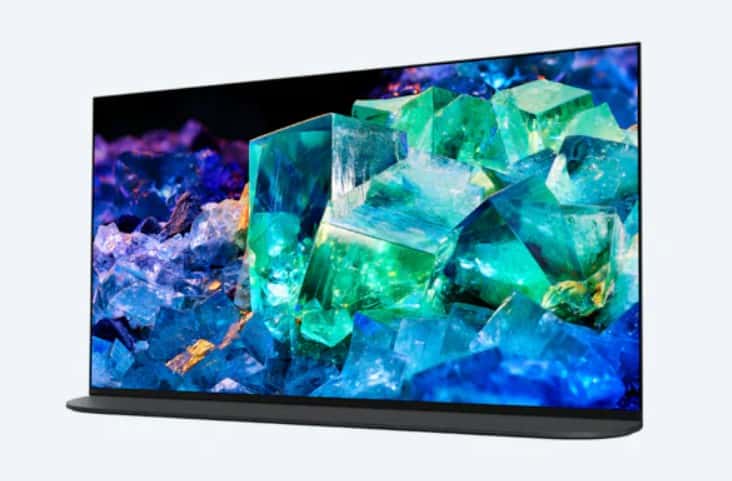
Pros:
- Fantastic response time
- 4K Upscaling feature
- Good choice for watching movies and series
- USB 3.0 support
Cons:
- No support for 1440p at 120Hz
- Slightly less bright comparatively
Samsung S95B
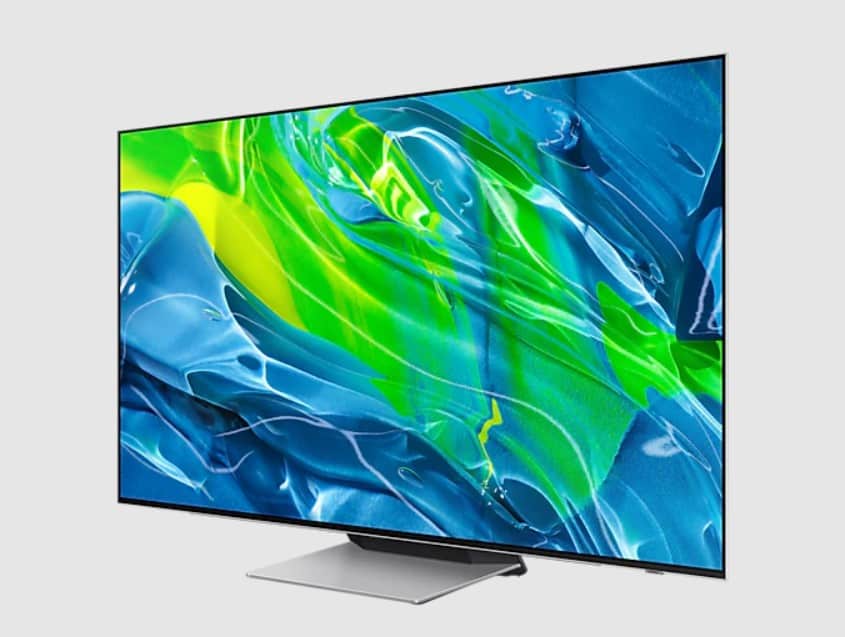
Pros:
- Brilliant colors
- Low input lag
- Fantastic peak brightness
- Good choice for gaming
Cons:
- No USB 3.0 support
- No integrated soundbar
Features Face to Face
Panel technology
Both Sony A95K and Samsung S95B come with the same panel technology. QD-OLED is a subtype of OLED panel technology. It stands for Quantum Dot OLED technology. Basically, it is a combination of OLED self-emissive lighting and quantum dot brightness and color features.
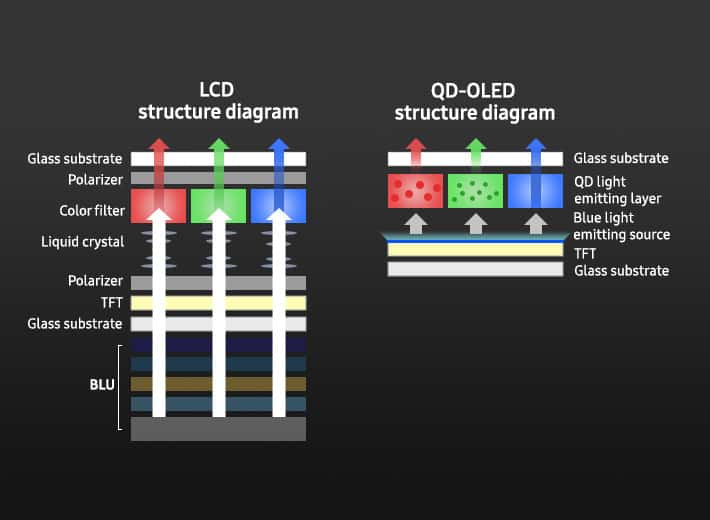
How does it work? Each pixel emits a blue light. Each blue pixel further divides into three subpixels:
- The blue one stays the same
- The red one uses red quantum dots
- The green one uses green quantum dots
As a result, in this process, there is no lost brightness because quantum dots are energy-efficient. So, QD-OLED combines fantastic OLED colors with great brightness levels.
Winner: Draw
Image Processor
Sony A95K comes with the Cognitive Processor XR. Sony emphasizes that this processor offers life-like content experiences. It improves contrast and makes the colors more vivid.
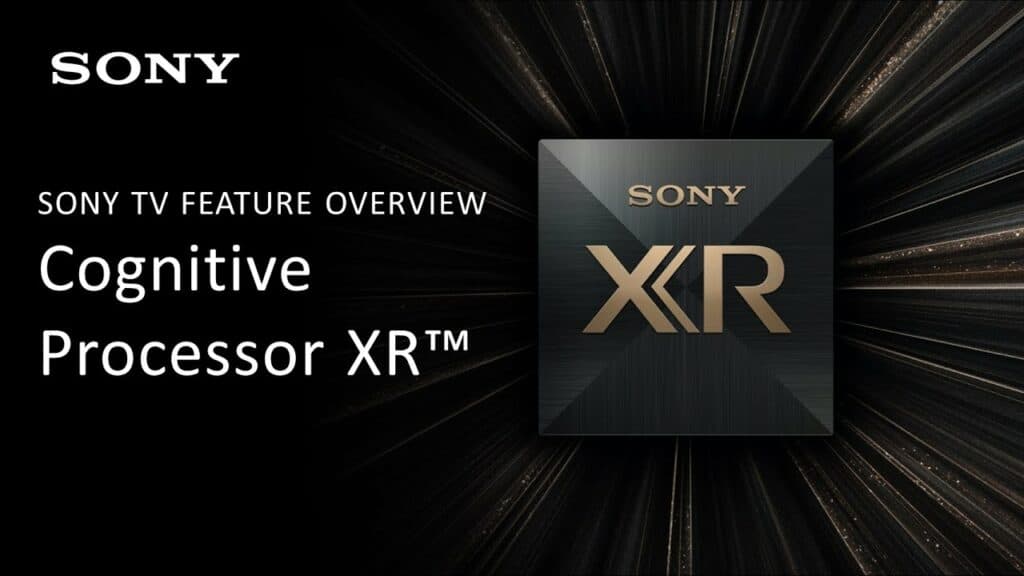
This Sony TV also comes with an XR 4K Upscaling feature, which upscales content of any quality to near 4K quality.
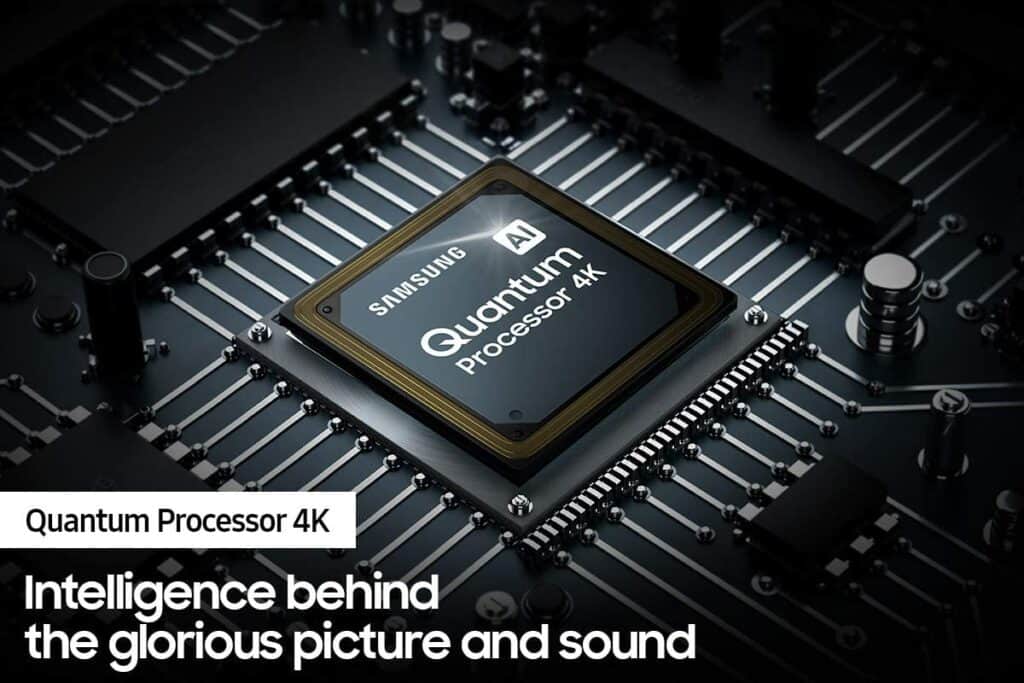
Samsung S95B has the Neural Quantum Processor 4K, an improved version of the Neo Quantum Processor. This processor also comes with a 4K Upscaling feature. Basically, it utilizes networks in order to optimize image quality by transforming any quality into 4K quality.
Winner: Draw
Motion Technology
The way the TV handles fast motion can have a big impact on your gaming experience. Let’s see how TVs in our Sony A95K vs Samsung S95B comparison stand in this segment.
| Performance Features | Sony A95K | Samsung S95B |
|---|---|---|
| Refresh rate | 120 Hz | 120 Hz |
| Variable refresh rate | Yes | Yes |
| Response time | 0.2 ms | 0.3 ms |
| Input lag 4K at 60 Hz | 17 ms | 10 ms |
| Input lag 4K 120 Hz | 9 ms | 5 ms |
They have the same native refresh rate of 120 Hz and both support variable refresh rates. The response time is very similar, but Sony is slightly better.
But both TVs have outstanding response times in general, which is important for gaming. It results in clear fast motions, meaning there is no blurring or ghosting. But they differ when it comes to input lag — Samsung S95B has impressively low input lag.
Winner: Samsung S95B
Picture Quality
Since the supported resolutions are one of the most important TV features, let’s see how these two models compare in this segment.
| Resolution | Sony A95K | Samsung S95B |
|---|---|---|
| 8K | No | No |
| 4K/144Hz | No | No |
| 4K/120Hz/4:4:4 | Yes | Yes |
| 4K/120Hz | Yes | Yes |
| 4K/60Hz/4:4:4 | Yes | Yes |
| 4K/60Hz | Yes | Yes |
| 1440p/144Hz | No | No |
| 1440p/120Hz | No | Yes |
| 1440p/60Hz | Yes (forced resolution required) | Yes |
| 1080p/144Hz | No | No |
| 1080p/120Hz | Yes | Yes |
| 1080p/60Hz/4:4:4 | Yes | Yes |
| Price | Check Price on Amazon | Check Price on Amazon |
As we can see in the table above, both TV models support most of the common resolutions up to 4K at 120 Hz and neither of them supports 8K resolution. The only difference is that 1440p at 60 Hz has to be forced on the Sony model. Also, the Sony model doesn’t support 1440p resolution at 120 Hz, whereas the Samsung model does.
Contrast Ratio / Black Level
The contrast ratio of these two models is near infinite contrast ratio (Inf: 1). So, in dark rooms, they display perfect blacks without blooming next to bright objects or highlights.
Unfortunately, neither of them comes with a polarizing layer. What this means is that if there is even a small source of light in your room, you could see a purple or pink tint on your black color. But they display a perfect black color in completely dark rooms.
Winner: Draw
Local Dimming
Local dimming is quite an important feature on LED TVs, which allows the TV to improve its contrast ratio. It is achieved via dimming zones. So, when you watch dark scenes in a dark room, you can see deep blacks.
Sony A95K and Samsung S95B have no backlight and no local dimming feature. The good news is that they don’t actually need it. They have an infinite contrast ratio, so the effect is practically the same.
Winner: Draw
Peak Brightness
Brightness is one of the categories in which these two TV models differ. Overall peak brightness is different. The Sony model reaches 1000 Nits, whereas the Samsung model reaches 1250 Nits.
Both models have an Automatic Brightness Limiter (ABL) which makes brighter colors dimmer. But overall Sony A95K has a good SDR peak brightness and a great HDR peak brightness. However, Samsung S95B does a better job in this segment. This also includes HDR brightness in Game Mode.
Winner: Samsung S95B
Color
Samsung S95B has fantastic color accuracy, both out of the box and after calibration. The Sony model has okay accuracy before calibration but becomes excellent post-calibration.
Each of them has a wonderful color gamut and color volume. They also do a great job when it comes to gradients. There is no banding when it comes to most colors.
We give a small advantage to the Samsung model since it has fantastic pre-calibration color accuracy. But you won’t be making a mistake if you opt for either of these two TVs.
Winner: Samsung S95B
Viewing Angle
Viewing angle is a feature you want to pay attention to if you have a wide seating area. It means that multiple people can watch the TV at the same time without downgrading in picture quality.
That said, you can choose either of these two TVs if you want wide viewing angles. They both excel in this category. However, the Samsung model has a slight advantage since it is almost perfect.
The picture will lose quality (slightly) only at the most extreme angles. Even though the Sony model is great in this segment, the Samsung model takes a win.
Winner: Samsung S95B
Reflections / Anti-glare
Sony A95K does a good job when it comes to reflections. However, when there is ambient lighting, the blacks could appear purple.
The same thing happens with the Samsung model as well. There could be a pink tint if there are ambient lights.
Both of these models come with an anti-reflection layer or coating. Sony calls it the X-Anti Reflection, but it does the same thing as the Samsung TV model — it fights the glare.
However, even though both TVs fight glare well, Samsung does a slightly better job overall when it comes to reflections.
Winner: Samsung S95B
Sound Quality
Even though neither of these TVs offers impressive sound quality, they have decent-quality speakers. Both come with 60 watts speakers. TV broadcasts and dialogues are clear and sound good.
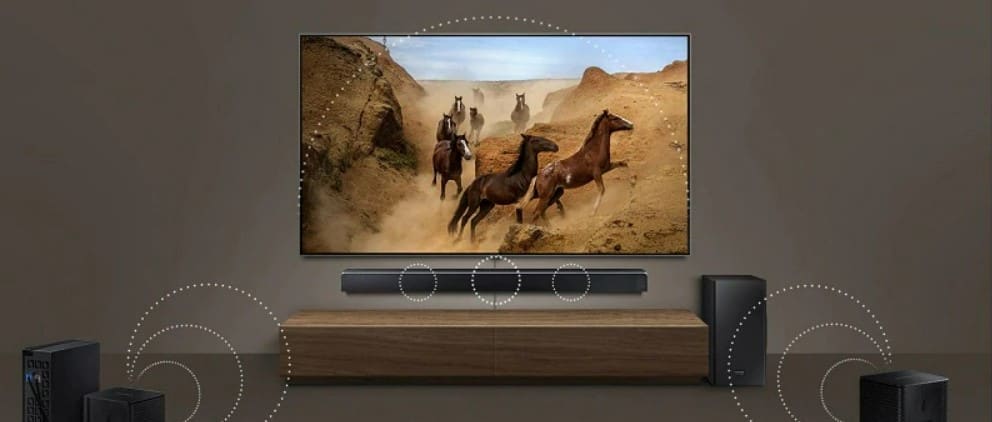
Neither of them has an integrated soundbar. If the sound is important to you, you can always purchase a soundbar and improve your listening experience.
Winner: Draw
Smart TV Platform (Operating System)
Sony A95K comes loaded with Google TV version 10, whereas Samsung S95B comes with Tizen 2022 as its operating system.
Each of them is very smooth and responsive. Tizen is fast and easy to use, mostly because it takes up the entire screen. So it is easy to find what you are looking for. Google TV is also a great operating system, but it is slightly awkward to use compared to Tizen.
Winner: Samsung S95B
Connectivity
Inputs
The inputs on these two TV models are similar. The biggest differences concern HDMI 2.1 and USB 3.0 support. But first, let’s see the overall number of inputs. As you can see, the Sony model lacks an analog audio out (3.5mm).
| Input type | Sony A95K | Samsung S95B |
|---|---|---|
| HDMI | 4 | 4 |
| USB | 2 | 2 |
| Digital Optical Audio Out | 1 | 1 |
| Analog Audio Out 3.5mm | 0 | 1 |
| Ethernet | 1 | 1 |
In terms of USB support, the Sony model stands a little better. It supports USB 3.0, whereas the Samsung model doesn’t.
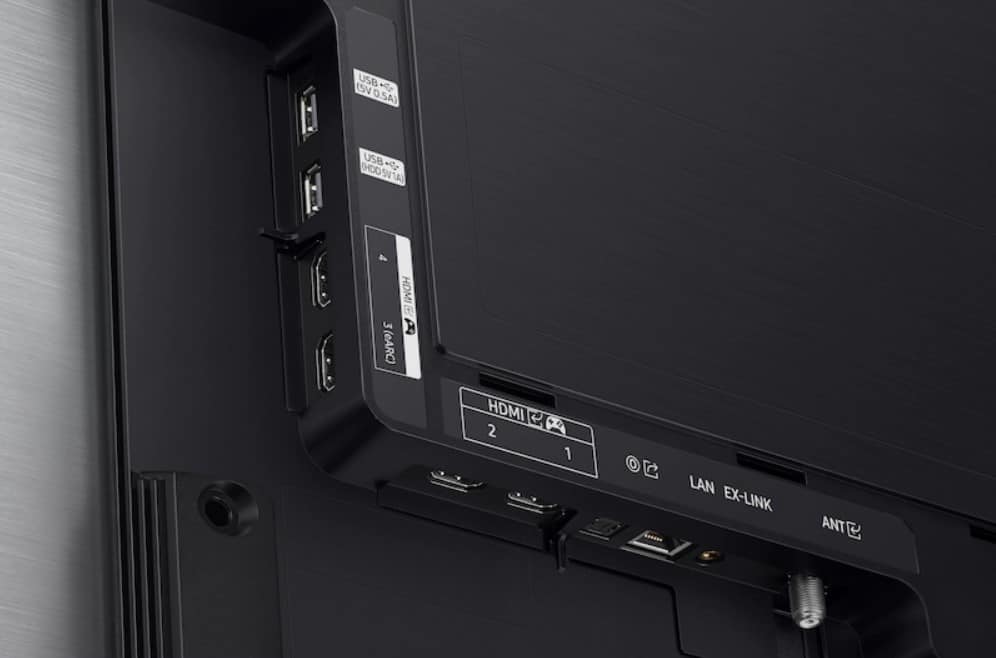
However, Samsung S95B offers better options regarding HDMI 2.1 support. All of its four HDMI ports support HDMI 2.1. On the other hand, the Sony model has only two ports supporting HDMI 2.1.
Winner: Samsung S95B
Voice Assistants
Sony A95K comes with Google Assistant integrated into it. It is also compatible with Amazon Alexa. On the other hand, Samsung S95B, besides Bixby assistant, has both Google Assistant and Alexa integrated.
Winner: Samsung S95B
Wireless Technologies
Both of these TV supports Wi-Fi connectivity. The Sony model supports Wi-Fi at 2.4GHz and 5GHz bands. The Samsung model supports WiFi5.
They also support Bluetooth, but Sony A95K supports version 4.2, and Samsung S95B supports the 5.2 version.
Winner: Samsung S95B
Also Read: Our other Sony/Samsung matchup- Sony X900H vs Samsung Q70T
Conclusion
So, let’s conclude this Sony A95K vs Samsung S95B comparison by emphasizing their main strengths.
Sony A95K has a fantastic response time, which means there is no blurring or ghosting around objects. It has the 4K Upscaling feature, so you can experience great image quality even if the source has poor quality. If you add a nearly infinite contrast ratio, it makes this TV a great choice for watching movies and series.
Samsung S95B supports all common resolutions up to 4K at 120 Hz. It has fantastic brightness and color accuracy. Besides a great native refresh rate, it supports variable refresh rates, has four HDMI 2.1 ports, and has a great input lag. All of this makes it a fantastic choice for gaming.
Which of these points was the dealbreaker for you? Let us know in the comments!